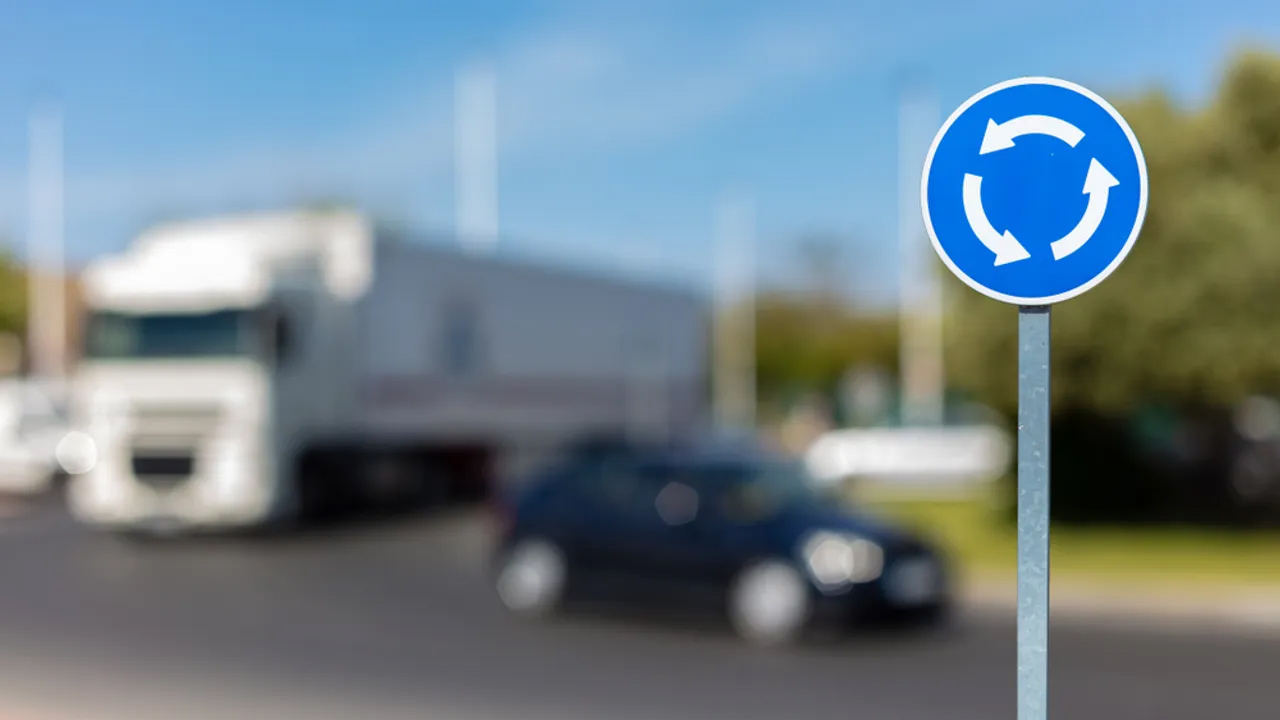Unpacking roundabouts, traffic circles, and mini-circles
Unpacking roundabouts, traffic circles, and mini-circles
There is a lot of confusion when approaching roundabouts (more commonly known as “traffic circles” in South Africa) and their much smaller offspring, the “mini-circle”. KEVIN VAN DER MERWE, executive manager – certification and operations at the Road Freight Association, explains the differences and how drivers should behave when approaching each one.
Some motorists come to a complete stop at a circle, treating it as a four-way stop and wanting to proceed in the sequence that they stopped. This is usually the same driver who only reduces speed at a four-way stop, demonstrating some strange and unpredictable behaviour. This goes entirely against what traffic rules are designed to do, which is to ensure the predictability of drivers’ responses to road environmental inputs, observations, and road traffic signs. It is when drivers respond in an unpredictable manner that crashes and road conflict are most likely to occur.
Traffic circles and mini-circles are not the same, and different rules apply to each.
The biggest difference applicable at a traffic circle (roundabout) is that the circle is elevated above the roadway and often uses curbing to physically impose the position of the circle and channelling islands. These are used as physical obstacles preventing vehicles from easily driving over them without sustaining damage.
The physical nature and presence of the circle (roundabout) compel motorists to drive around it. They require more space and can only be constructed in large intersections, so their planning is generally required at some stage before the development of an area or suburb.
The dimensions and steerability of the vehicles using traffic circles will also dictate the size of the traffic circle. Other factors – such as topography and whether buses and articulated commercial vehicles (CVs) frequently use the area – will impact on the decision over whether to use a traffic circle or some other method of traffic control (such as stop signs or traffic signals) at an intersection.
When approaching a traffic circle, certain duties are imposed on a driver. You should:
- Reduce speed and stop if necessary.
- Move around the traffic circle in a clockwise direction.
- Obey all road traffic signs, markings, signals, and rules.
- Yield the right of way to pedestrians and traffic from the right already in the traffic circle, particularly when the vehicles are close enough to be a danger to you as your vehicle enters the traffic circle.
- If your intention is to take the first exit from the traffic circle, you should indicate left when approaching the circle. For all other exits out of the circle, indicate left while in the circle, in good time prior to the exit being taken.

Mini-circles
Mini-circles and their channelling islands, on the other hand, are usually painted on the roadway, with the painted centre of the circle sometimes raised above the roadway to make it more visible to approaching motorists, as well as discourage vehicles from driving over the circle. The centre of the mini-circle is raised gently from the roadway, so that when larger turning vehicles such as buses and trucks have no option other than to drive over the circle, the risk of being damaged is reduced.
Mini-circles are generally used in established suburban areas with existing street networks carrying bi-directional traffic on a divided single carriageway. When constructing a roundabout (traffic circle) is too expensive – or impossible as a result of existing constrictions such as property boundaries or road furniture – a mini-circle is often a viable and safe traffic control option. It is cost-effective to paint the road markings, erect the road signs, and raise the centre of the mini-circle – without needing to significantly enlarge an intersection.
When approaching a mini-circle, certain duties are imposed on a driver. You should:
- Reduce speed and stop if necessary.
- Move around the mini-circle in a clockwise direction, while attempting not to encroach on the mini-circle.
- Obey all road traffic signs, markings, signals, and rules.
- Yield the right of way to any vehicle that will cross any yield line before them at the junction and would – in the normal course of events – cross the path of your vehicle.
- On approaching a mini-circle in an intersection, signal to the left or the right, depending on the intended direction of travel. If proceeding straight, no signal is necessary.
Multiple-lane traffic circles (roundabouts)
Large roundabouts may comprise two or more traffic lanes. Always be aware of large vehicles in these multi-lane traffic circles. Articulated heavy CVs and buses tend to use more than one lane when turning, so it is inadvisable to be on their right in the inside lane while they are turning. These vehicles can severely encroach on the inside lane when travelling around a traffic circle and can potentially crush smaller vehicles between them and the curb.
When intending to exit the traffic circle at the first exit or proceeding straight, it is usually advisable to stay in the lanes furthest to the left. Always be aware of other vehicles in the roundabout that may not be knowledgeable about how to properly use these roundabouts.
* Information in this article is based on extracts from the National Road Traffic Act, Act 93 of 1996 (as amended), updated to 5 September 2024.
Published by
Kevin van der Merwe
focusmagsa




